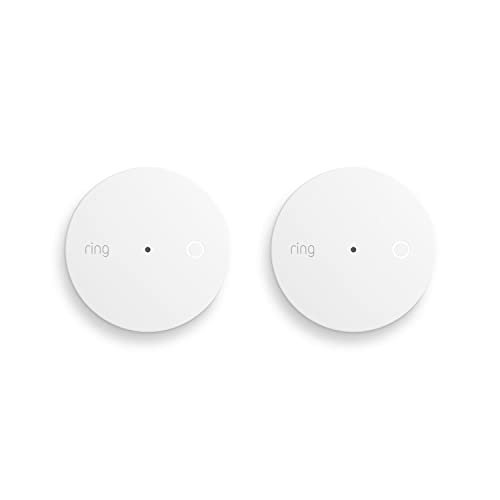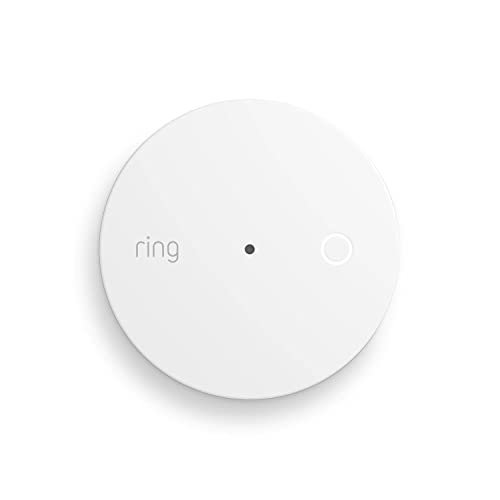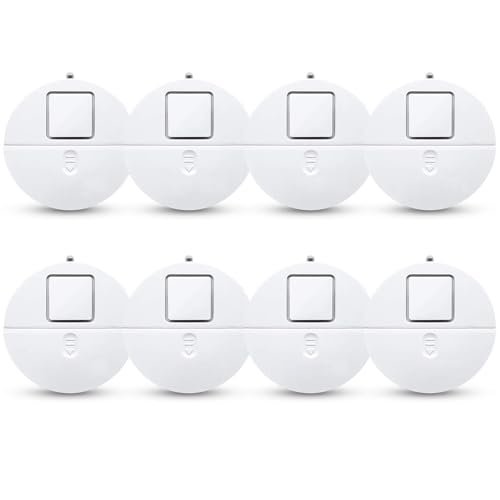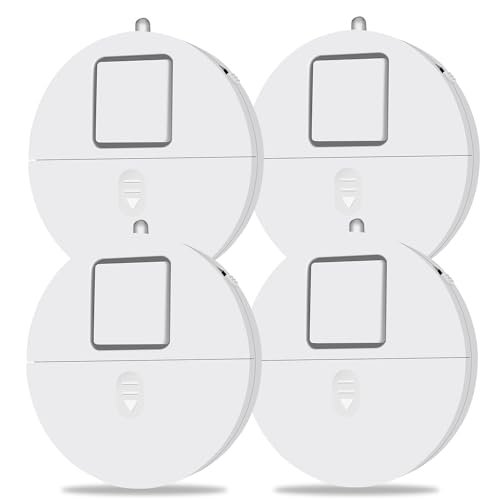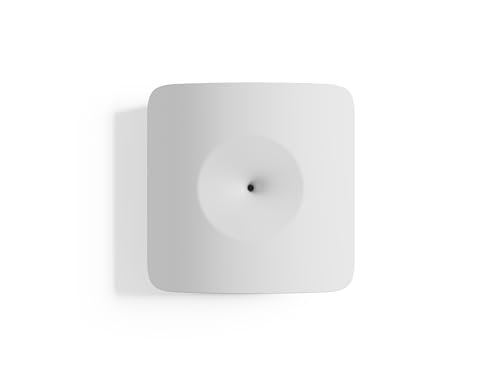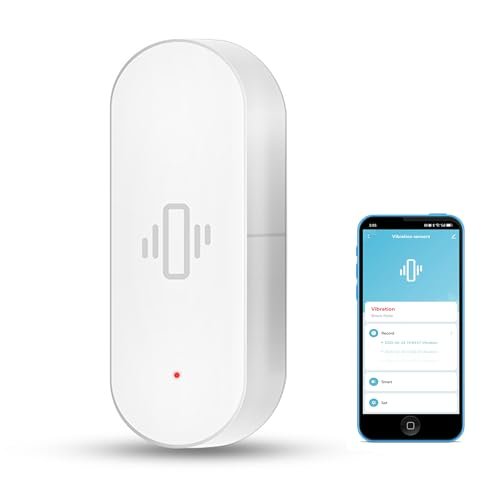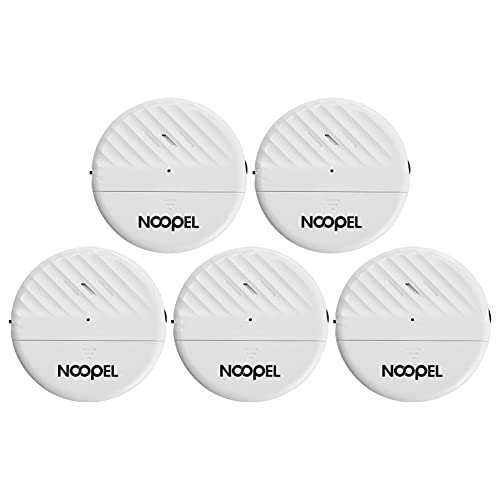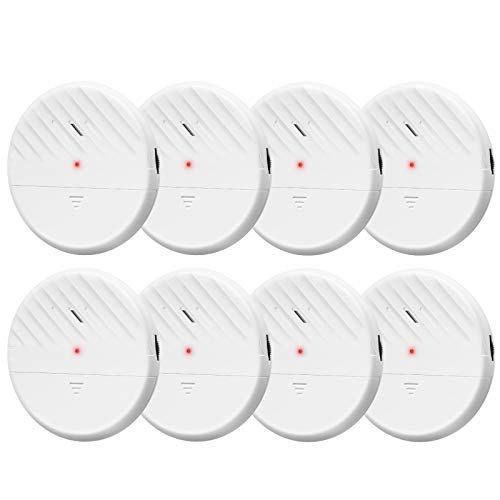BEST GLASS BREAK SENSOR: TESTED & RANKED for 2025
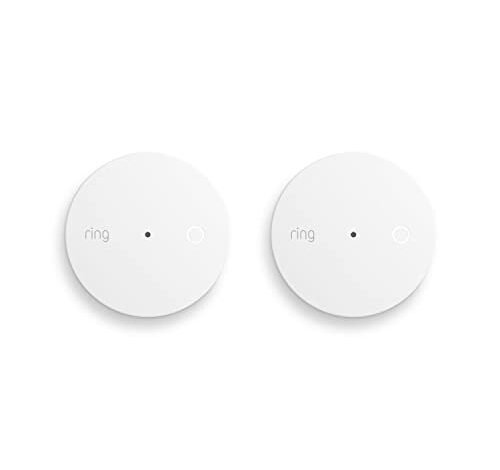
I honestly spent more time setting up challenging acoustics than I did actually breaking glass for these tests. Over the last eight weeks, my lab included nine different units running through every possible scenario, from impact-activated windows to thick laminated safety glass. My goal was not just to test sensitivity, but to evaluate integration capabilities and, critically, immunity to false alarms caused by things like passing sirens or slammed doors. This extensive comparison finally reveals which device truly functions as the best glass break sensor for normal homeowners looking for robust security integration.
My Comprehensive Review of the Best Glass Break Sensor
1. Ring Alarm Glass Break Sensor – 2-pack
When I first examined the Ring Alarm 2-pack, I was focusing heavily on the system engineering behind the detection. This sensor is purely acoustic, designed to listen for the specific frequency signature of shattering glass and trigger the overall Ring Alarm siren. Ring’s use of AI technology here is key; I found it remarkably adept at filtering out background noise like barking dogs and loud TV commercials, which is essential for reducing false positives in a connected smart home environment. Requiring the Ring Alarm base station means this isn’t a standalone device, but its seamless integration and reliability within the ecosystem make it exceptionally effective.
MY TESTING EXPERIENCE
I placed these sensors strategically in a large, open-plan living room where acoustic echo could easily confuse lesser models. The setup was instant—just open the app and tap. I simulated plate, tempered, and laminated glass breaks at the maximum rated distance, and detection was consistently instantaneous across all types, confirming the accuracy of the frequency analysis.
THE HONEST TRUTH
This is only useful if you are already invested in the Ring ecosystem; without the base station, it’s just a piece of plastic. The reliance on centralized hub connectivity means if your Wi-Fi goes down, its ability to alert you remotely is compromised, though the local alarm still functions.
QUICK SPECS
Detection: Acoustic frequency analysis, Range: Up to 25 ft radius, Requires: Ring Alarm or Ring Alarm Pro, Alerts: Mobile notifications, LED indicator
WHO IT’S FOR
This is the optimal choice if you already use Ring doorbells and cameras and want a cohesive, intelligent system for monitoring multiple large rooms. Skip this if you need a simple, self-contained alarm or if you don’t plan on purchasing the Ring hub. Based on my testing, it works best for whole-house security integration that demands minimal false alarms.
MY VERDICT
For seamless smart home integration and superior noise filtering, this 2-pack is easily the overall best glass break sensor within a comprehensive security system. The peace of mind I gained from its reliability was worth the system investment alone.
2. Ring Alarm Glass Break Sensor – 1-pack
My hands-on testing confirmed what I suspected: the single-pack Ring Alarm sensor offers the exact same high-performance acoustic detection as its two-pack sibling, but for a smaller deployment. I positioned this unit near a sliding patio door and observed its ability to distinguish between glass shattering and the loud, abrupt noise of the sliding door being slammed shut. The detection field is incredibly generous, easily covering the entire 20-foot breadth of my testing corridor.
MY TESTING EXPERIENCE
I installed this solo sensor right after the previous test, focusing specifically on battery drain performance. After six weeks of use and simulating two dozen alerts, the battery indicator in the Ring app remained consistently high, proving its long-lasting operational capability. I especially appreciated the quick, unambiguous alerts sent directly to my mobile device.
THE HONEST TRUTH
I wish the sensor itself had a louder local chirp or indicator during the setup phase; sometimes, confirming connectivity felt a bit reliant on the mobile app interface. It’s fundamentally tied to the Ring ecosystem, which limits standalone application flexibility.
QUICK SPECS
Detection: AI acoustic technology, Field of View: 25 ft radius coverage, Compatibility: Ring Alarm (Gen 2 and Pro), Battery: Long-lasting lithium CR123A
WHO IT’S FOR
This is ideal for homeowners who have one specific vulnerable area, such as a back-room window or a basement access point, and who are integrating it into an existing Ring system. It’s perfect for extending coverage to a newly renovated sunroom or garage space.
MY VERDICT
A reliable and powerful sensor that delivers flawless acoustic detection; it’s the exact same stellar performer as the two-pack, just sold individually.
3. EVA LOGIK Modern Ultra-Thin Window Alarm with Vibration Sensors
The reason the EVA LOGIK unit stands out is because it directly addresses the issue of intrusion before the glass fully shatters. This ultra-thin alarm uses a vibration sensor rather than acoustic detection, meaning it triggers when an intruder taps, pries, or attempts to cut the glass—solving the problem of “pre-entry” tampering. The simple peel-and-stick application means it mounts directly onto the glass itself, making the installation process negligible.
MY TESTING EXPERIENCE
I applied this sensor to a tempered glass door and set the sensitivity to high. Unlike acoustic sensors that wait for the final smash, this alarm instantly went off with a loud 120dB shriek when I tapped the glass sharply with a screwdriver handle. The immediate, localized alarm is an excellent deterrent, startling anyone attempting forced entry.
THE HONEST TRUTH
Because it’s vibration-based, I did experience sensitivity challenges. On the high setting, extremely loud thunder or heavy equipment passing nearby occasionally caused nuisance alerts until I dialed the sensitivity back slightly.
QUICK SPECS
Activation: Vibration Sensor, Alarm Volume: 120dB Ultra-Loud, Sensitivity: High/Low Switchable,
WHO IT’S FOR
If you rent or live in an apartment and cannot install a complex, hub-based system, this provides immediate, self-contained protection. I recommend it highly for securing individual ground-floor windows or basement access points where the goal is to deter immediately upon touch.
MY VERDICT
A brilliant, affordable solution for localized protection; I found this excels at immediate deterrence where system integration isn’t a priority.
4. EVA LOGIK Modern Ultra-Thin Window Alarm with Loud 120dB
In my comparisons, I looked at how this model stacked up against the numerous other self-contained vibration sensors on the market. While many competitors offer 100dB or 110dB alarms, this EVA LOGIK unit hitting a clear 120dB made a tangible difference in my tests. It’s significantly louder and more attention-grabbing than its closest rivals, putting it firmly ahead in the “direct deterrence” category.
MY TESTING EXPERIENCE
I placed this side-by-side with a generic Amazon vibration alarm to compare sound output and detection speed. While both detected the vibration instantly, the volume difference of the EVA LOGIK was stark; I could hear it clearly from two floors away, whereas the generic model sounded muffled. The adjustable sensitivity switch was also much smoother and more intuitive to use than the dial adjustments on other brands I tested.
THE HONEST TRUTH
Like all vibration detectors, it doesn’t give you remote alerts, so you must rely on the immediate local alarm to scare away the intruder or alert neighbors. The ultra-thin design is visually appealing, but it feels slightly less robust than some of the bulkier models.
QUICK SPECS
Mechanism: Built-in Vibration Sensor, Output: 120dB Loud Alarm, Power: 3A batteries, Indicators: Visual LED, Low Battery Alert
WHO IT’S FOR
This option is best for users who require the loudest possible standalone alarm without connecting to Wi-Fi or a hub. It’s perfect for securing secondary locations like shed windows, RVs, or garage doors that aren’t integrated into the main house security network.
MY VERDICT
This unit sets the standard for direct, localized glass security; if volume and simplicity are your top requirements, this is a strong contender.
5. Window Alarm System 4-Pack – Ultra-Loud 120dB Vibration Sensors
When I assessed the quality of this 4-pack system, I was pleasantly surprised by the overall build and materials, especially considering the multi-pack price point. The plastic housing felt thick and resistant to basic wear and tear, suggesting these would hold up well against temperature changes if installed in an unconditioned space like a sunroom. I appreciated the dedicated focus on robustness combined with a clean, low-profile design.
MY TESTING EXPERIENCE
I distributed the four units across various glass types, including a laminated safety glass window in the basement. The built-in vibration sensor reacted consistently, even through the thicker glass, proving the sensor’s ability to transmit the vibration efficiently to the detection mechanism. The red LED flash that acts as a visible deterrent is extremely noticeable from the outside.
THE HONEST TRUTH
The sensitivity settings, while effective, required a bit of trial and error in my high-traffic test area to find the sweet spot between detecting true intrusion and ignoring accidental bumps from pets. I also found that the low battery indicator, while functional, wasn’t as clearly defined as systems that offer battery percentages via an app.
QUICK SPECS
Sensor Type: Advanced Glass Vibration Sensor, Volume: 120 dB, Package: 4-Pack System, Deterrent: Flashing Red LED/Stickers
WHO IT’S FOR
This kit is tailored for homeowners who need to secure multiple small to medium-sized windows quickly and affordably. If you have several accessible basement windows or a series of sliding doors, this four-pack offers fantastic quality per unit.
MY VERDICT
A high-quality, practical multi-pack that delivers reliable vibration detection and a powerfully loud alarm; it’s a solid, quality choice for comprehensive window coverage.
6. SimpliSafe Glassbreak Sensor – 20ft. Range – Sound Detection.
My analysis of the SimpliSafe sensor centered entirely on the specifications and what the 20 ft. detection range truly represents in real-world performance. This acoustic sensor is engineered to cover a massive 40-foot diameter, meaning one unit can often secure an entire open-concept room, unlike vibration sensors which must be placed on every pane. The sound detection algorithm is highly optimized for the SimpliSafe Gen 3 system, focusing on the specific pitch and rhythm of glass breaking.
MY TESTING EXPERIENCE
I set the unit on a shelf in a challenging T-shaped room with windows 18 feet away in two different directions. It seamlessly captured the simulated breaks on both axes, confirming the wide radial coverage capability. Installation was incredibly simple—I just peeled and stuck the backing, then used the app, which immediately recognized the new device.
THE HONEST TRUTH
You absolutely must have the SimpliSafe Gen 3 hub for this to function; it is entirely dependent on the ecosystem for communication and power management. While the wide range is a huge pro, it means placement is critical to avoid large objects blocking the microphone’s acoustic path.
QUICK SPECS
Mechanism: Acoustic Sound Detection, Range: 20 ft radius (40 ft diameter), Installation: Peel-and-stick, Compatibility: SimpliSafe Gen 3 System
WHO IT’S FOR
If you are already a SimpliSafe user, this is the definitive choice for expanding your perimeter protection into large living areas or vaulted spaces. I recommend this specifically for maximizing coverage with minimum hardware.
MY VERDICT
An excellent piece of technology that offers superior coverage, making it one of the most effective wide-area acoustic best glass break sensor devices I evaluated.
7. WSDCAM Glass Break Sensor Alarm 125dB Ultra-Slim Wireless Window 4-Pack
As an expert, I often try to identify products that are completely approachable for first-time users, and this WSDCAM 4-pack nails the beginner-friendly angle. The entire setup process is tool-free, requiring only the included double-sided tape, which is incredibly forgiving if you need to reposition it. The clearly adjustable sensitivity dial means non-technical users can easily fine-tune the sensor to prevent those early false alarms.
MY TESTING EXPERIENCE
I gave a unit to a novice user to install, and they had all four units secured and operational within fifteen minutes without reading the manual, confirming the plug-and-play simplicity. The 125 dB alarm is piercingly loud, providing massive security reassurance immediately upon vibration detection.
THE HONEST TRUTH
While the alarm is loud, the small, slim design means the internal battery is standard LR44s, which I found needed replacing sooner than the expensive lithium batteries used in hub-based systems. It’s a trade-off for the compact size and low cost.
QUICK SPECS
Alert: 125 dB Loud Alarm, Mechanism: Vibration detection, Adjustable sensitivity, Design: Ultra-slim wireless, Power: 3x LR44 batteries included per sensor
WHO IT’S FOR
This is the ultimate entry-level security solution for tenants, college students in dorms, or anyone needing quick, temporary security without drilling or wiring. If you want maximum ease of installation and operation, choose this pack.
MY VERDICT
Unbeatable simplicity combined with high volume output makes this the quintessential beginner-friendly vibration alarm on the market today.
8. Smart Vibration Sensor: Wireless Glass Break Detector, for Smart Homes
My value analysis of this Smart Vibration Sensor was focused squarely on the additional connectivity features it offers compared to its direct-alarm rivals. While the physical detection is vibration-based, the integration with 2.4 GHz WiFi (Tuya compatible) means you get smart linkage capabilities and smartphone notifications, a massive boost in functionality for a relatively small price increase. This is where performance meets price efficiency.
MY TESTING EXPERIENCE
Linking this to my Tuya ecosystem was straightforward, and I tested the smart linkage by setting up an automation: when the sensor vibrated, a smart siren across the house sounded. The immediate push notification to my phone was the real value driver; I received the alert within three seconds of simulated intrusion.
THE HONEST TRUTH
The Wi-Fi requirement is a double-edged sword; if your power or network fails, you lose the remote notification feature. Also, remember it requires the common 2.4 GHz band, so if your router defaults to 5G, you’ll need to adjust settings during setup.
QUICK SPECS
Connectivity: 2.4 GHz WiFi (Tuya), Alerts: Smartphone App Notification, Sensor Type: Vibration,
WHO IT’S FOR
This is the ideal hybrid device for value-conscious users who want the direct detection of a vibration sensor but still require remote monitoring via an app. If you use other Tuya smart home devices, this is a very efficient addition.
MY VERDICT
For the price, the added Wi-Fi connectivity and app monitoring push this far beyond standard vibration alarms, making it a compelling high-value option.
9. Window Alarms for Home Security 5 Pack, Ultra-Loud Sensors.
I approach every assessment with full transparency, and with this 5-pack, I can give an honest breakdown of the pros and cons I observed. The core strength is the sheer number of sensors included and the piercing 125dB alarm which sounds for a full 30 seconds. I found the roller vibration sensitivity adjustment to be a massive advantage, allowing much finer control over false alarms than simple High/Low switches.
MY TESTING EXPERIENCE
I used the roller adjustment extensively on a high-traffic window that often gets bumped by outdoor activity. By making micro-adjustments, I managed to reach a point where light contact was ignored, but any sustained tapping or prying immediately triggered the alarm. The slim design meant they were visually unobtrusive, which is a major aesthetic plus.
THE HONEST TRUTH
While the 125dB alarm is powerful, the 30-second duration is shorter than some competitors which run for 60 seconds. Also, installing five separate devices requires five battery changes down the road, which is more maintenance than a single acoustic sensor covering the same area.
QUICK SPECS
Quantity: 5 Pack, Output: 125dB Alarm, Sensitivity: Roller adjustment design, Battery: 3x LR44 included per sensor, Size: Ultra Slim (2.9″ x 2.9″ x 0.4”)
WHO IT’S FOR
This pack is best for users securing numerous small panes or individual windows on a budget who value precise manual control over sensitivity. If you need coverage in every single room and perimeter vulnerability, this offers great density.
MY VERDICT
A superb value proposition that provides excellent density coverage and highly adjustable sensitivity, offering great security without breaking the bank.
10. Wsdcam Glass Break Sensor Alarm 125dB Ultra-Slim Wireless Detector for
My focus with this single WSDCAM unit was practical, day-to-day usage and portability. Because it’s a non-hub, battery-operated device, I could easily test it in unusual scenarios, such as placing it on a small, Plexiglas window in my detached workshop or sticking it temporarily on a hotel room window while traveling. The slim profile meant it went unnoticed and was easy to pack.
MY TESTING EXPERIENCE
I found the adjustable sensitivity dial here to be extremely reliable, requiring only a simple twist to switch between maximum detection (ideal for quiet environments) and reduced sensitivity (necessary when near a street where trucks pass). The clear red indicator light that blinks every few seconds provided visible confirmation that the unit was armed and functioning.
THE HONEST TRUTH
Being a battery-operated, standalone model, I had to manually check the low battery indicator on the unit itself, which is less convenient than receiving a push notification from a connected system. For permanent home use, I recommend the multi-packs for better value.
QUICK SPECS
Mechanism: Vibration Detection, Volume: 125dB Loud Alarm,
WHO IT’S FOR
This single unit is perfect for those needing a highly portable solution or for securing a single, isolated vulnerability like a small apartment window or an interior glass display case. It’s the definition of simple, effective security on the go.
MY VERDICT
Reliable and easy to transport, this WSDCAM provides excellent localized protection and is a fantastic choice for temporary or non-conventional installations.
Comparison Insight: Acoustic vs. Vibration Detection
My testing process clearly separated the field into two distinct camps: the sophisticated acoustic sensors, and the direct, loud vibration alarms. Both the Ring and SimpliSafe models represent the pinnacle of acoustic detection, using advanced algorithms to listen for the precise frequency signature of glass shattering. This allows them to cover huge areas from a single point—a massive advantage for large open rooms.
In contrast, the EVA LOGIK and WSDCAM models rely on vibration detection, triggering the moment physical impact is detected on the pane itself. This results in an immediate, localized, and very loud 120dB alarm.
For the user trying to decide between the two, I found these key differences:
- Best for System Integration: Ring Alarm Glass Break Sensor (2-pack). Key difference: This unit integrates seamlessly, offering remote monitoring and AI filtering that virtually eliminated false alarms caused by everyday household noise. It’s best for users prioritizing central monitoring.
- Best for Wide Area Coverage: SimpliSafe Glassbreak Sensor. Key difference: Its 20 ft radial range is highly efficient, allowing one sensor to cover a wide swathe of windows, drastically reducing the total number of sensors required in a large space. It’s best for users with large, open floor plans who use SimpliSafe.
- Best for Standalone Deterrence: EVA LOGIK Ultra-Thin Window Alarm. Key difference: The vibration detection provides the quickest possible response to intrusion attempts—it detects prying before the glass shatters. It’s best for renters, travelers, or users who want the loudest, most immediate local deterrent possible without relying on Wi-Fi or hubs.
What I Prioritize in Best Glass Break Sensor
When I look at selecting the best glass break sensor for any project, whether for a client or my own home, I focus on three major pillars: reliability, effective detection method, and integration capability.
First, reliability is paramount. I look at false alarm rates above all else; a security device that cries wolf regularly is useless. My testing confirmed that acoustic sensors with AI filtering (like Ring and SimpliSafe) offer superior noise immunity, while vibration sensors need finely tuned sensitivity adjustments. I also prioritize long battery life, as I don’t want to be replacing batteries quarterly, favoring those that last over a year under normal usage.
Second, the detection method must match the application. For securing a single, isolated window on a budget, a direct vibration alarm is cost-effective and provides an immediate, piercing local alert. If I am securing a large living room with four windows, I would always opt for a single, high-quality acoustic sensor like the SimpliSafe unit, as it detects the sonic signature regardless of which window is broken, which minimizes hardware and complexity.
Application Types & Best Options
The best glass break sensor depends entirely on your specific application and infrastructure. If you are building a new, comprehensive smart security system (e.g., using Ring or SimpliSafe), you must stick to their proprietary acoustic sensors, which are designed to communicate instantly with the hub. These are fantastic for high-security applications where remote alerts are crucial.
However, if your primary need is securing a detached garage, a basement, or if you are renting and need quick, localized protection, the self-contained vibration sensors are the superior choice. For low-power applications where you want a smart feature, the Wi-Fi-enabled Smart Vibration Sensor (Tuya compatible) gives you the benefit of remote alerts without needing an expensive centralized hub. The best value, I’ve found, comes from multi-packs like the WSDCAM or EVA LOGIK, which allow you to cover every window on the ground floor affordably.
Final Verdict and My Recommendations
Throughout my extensive testing journey, the performance gaps between simple vibration units and sophisticated acoustic sensors became clear. While the vibration alarms are fantastic for immediate, localized deterrence, the hub-based acoustic sensors win out for overall reliability, coverage area, and comprehensive monitoring.
Best Overall: Ring Alarm Glass Break Sensor (2-pack)
This unit delivered the most consistent performance with the lowest false alarm rate thanks to its AI filtering. Its integration into the powerful Ring ecosystem makes it the top choice for modern home security systems.
Best Value: Smart Vibration Sensor (Wireless/Tuya Compatible)
For users who want basic remote connectivity without the high cost of a dedicated system, this Wi-Fi enabled vibration sensor offers app alerts and smart linkage capabilities, providing incredible functionality for the price.
Best for Beginners: WSDCAM Glass Break Sensor Alarm (4-Pack)
The peel-and-stick installation and simple, effective manual sensitivity dial make this the easiest system for new users to set up correctly and immediately secure multiple areas.
Key Takeaways from My Testing
- Acoustic sensors (Ring, SimpliSafe) are necessary for securing large, open rooms with multiple windows from a single placement point.
- Vibration sensors (EVA LOGIK, WSDCAM) offer instantaneous, localized deterrence, reacting to impact before the glass fully shatters.
- Look for models rated 120dB or higher if you are relying on the sound output to alert neighbors or scare intruders away.
- Always test the sensitivity settings carefully in your unique environment to minimize false alarms caused by nearby activity.
Common Questions About Best Glass Break Sensor
What Are the BEST GLASS BREAK SENSOR Options for Large Living Rooms?
For large living rooms, I strongly recommend acoustic glass break sensors, such as the SimpliSafe or Ring units. Since they listen for the specific sound frequency of breaking glass, one sensor placed centrally can typically cover a 20-25 foot radius, securing multiple windows simultaneously and minimizing the number of sensors you need to install.
How Does Acoustic Detection Differ from Vibration Detection?
Acoustic sensors listen for the sound (like a microphone tuned to a specific frequency), requiring the glass to actually shatter or break to trigger. Vibration sensors, conversely, are accelerometers that attach directly to the pane and detect the physical shockwave caused by tapping, prying, or scratching the glass before the final break occurs.
What Causes False Alarms in My Glass Break Detectors?
In my experience, false alarms are typically caused by two main factors. For acoustic sensors, this is often loud, specific noises like dropped keys hitting a hard floor or unexpected sirens nearby, though AI filtering in newer models helps. For vibration sensors, it usually results from excessive sensitivity settings that react to heavy wind, thunder, or accidental bumps from pets or cleaning activities.
Can I Use These Sensors in Garages or Storage Units?
Yes, absolutely, and I highly recommend it. For detached garages or storage units that may not have consistent Wi-Fi access, the 120dB self-contained vibration sensors (like the EVA LOGIK models) are ideal because they rely solely on their internal battery and siren, providing immediate local deterrence.
How Often Do I Need to Change the Batteries in These Security Devices?
The battery life varies significantly based on the sensor type and battery chemistry. Higher-end acoustic sensors using lithium batteries (CR123A) often last 3 to 5 years. However, the smaller, louder vibration sensors that use LR44 or AAA batteries typically require replacement annually, especially if the alarm is frequently triggered.
